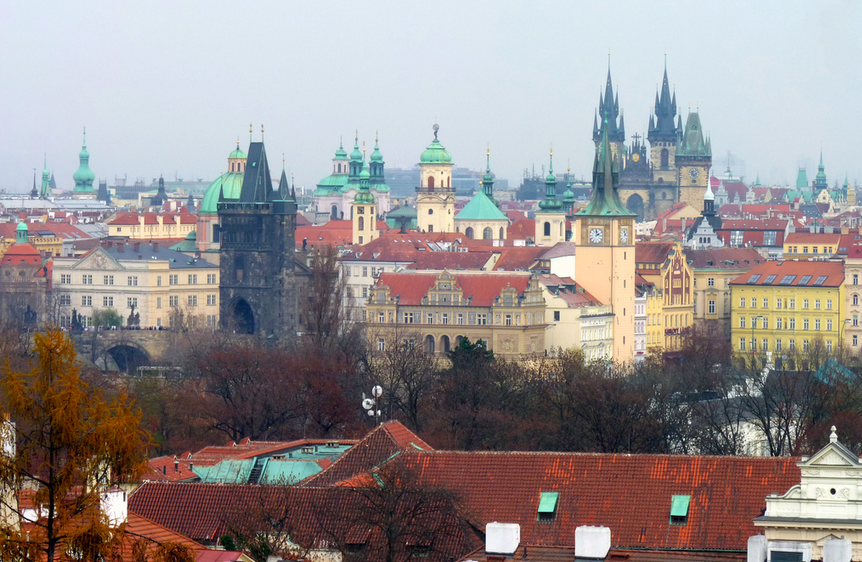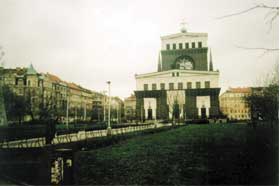Prague, the capital of the Czech Republic, has a well-earned reputation for excellence when it comes to its architecture and local culture. Indeed, there are many UNESCO World Heritage Sites within the city and elsewhere in the Czech Republic that can be enjoyed during a visit.
Each part of Prague provides its own distinctive look. There are many districts within the city, named Praha 1 through Praha 10. Praha 1, Stare Mesto (‘Old Town’) has the oldest buildings within the city. New Town was started in the 1400s so more modern buildings are often located there.
The rich history is most evident in the resplendent architecture throughout the city which includes buildings that are hundreds of years’ old from the Gothic, Renaissance and Baroque periods.
Prague Architectural Styles
The Gothic style (which partially evolved from the Romanesque style before it) was popular from 1100 to 1450. The Gothic style was symbolised by arches that partially supported exterior walls, stained glass windows and uneven pointed spires with heights not previously achievable before the 12th century.
The Renaissance style between 1400 to 1600 replaced the Gothic style which had become derided in some circles. This style emphasised symmetrical shapes, columns, arches and domes. The Renaissance style was almost a step back to classic Greek or Roman architecture.
The Baroque style of architecture began around 1600 and lasted until 1830. It replaced the simplified look of the Renaissance period with almost the opposite design ideology based around extravagance. Complex shapes, twisted columns and grand entrances. Everything that stood for high attention to detail and intricate design were exhibited in buildings utilizing the Baroque style.
St. Vitus Cathedral
The St. Vitus Cathedral, located in Praha 1, may hold the record for the longest period of construction of a cathedral. Whilst construction of the cathedral was not continuously ongoing, it did last for more than 600 years until finally being completed in 1929.
This was intended to be a masterpiece of Gothic design back in the 1300s. The original architect, Matthias of Arras, died early into the initial construction phase, and so this begun the passing of the torch from builder to builder over the centuries. Eventually the cathedral with its tall spires came to be a popular symbol within Prague.
The building is also unusual because whilst initially being created in a classic Gothic style, this evolved over the centuries into a seamless blending of styles. This may not please architectural purists, but for the thousands of visitors who come to see the St. Vitus Cathedral every month, it is no less impressive for it.
Prague Castle
No visit to Prague is complete without at least one trip to see the Prague Castle situated within the enormous Hradcany Royal complex, located in Praha 1, which conveniently includes the St. Vitus Cathedral within the same grounds.
Construction of the Prague Castle originally commenced in the 9th century. More than 500 years later, there were no descendants remaining of the Premyslid family who had previously lived there. Charles IV took the castle on as a personal project and had it remodelled as a Gothic palace.
This history of the castle changing hands, being taken over, and then redesigned using a different style of architecture has happened repeatedly over the centuries. The Prague Castle has been used as the seat of the presidency since the early 1900s. Today, only some parts are open to public viewing.
National Theatre
The National Theatre, located in New Town near Praha 1, is much more modern than other buildings within Prague. The neo-Renaissance style is distinctive enough with its golden roof as an obvious landmark from the Vitava river near Old Town.
The popularity of the theatre was such that when it was damaged by fire shortly prior to opening, it took only a few weeks to raise the funds necessary to repair the damage.
The cultural and artistic centre of Prague is often said to be at the National Theatre where notable opera, ballet and dramatic Czech performances continue to be put on for the public to appreciate.
Where To Stay in Prague
It is advisable to try to stay near the centre (Ideally Praha 1 or 2) as Prague itself is a sprawling city with many districts which can get confusing for new visitors. From the centre, it is relatively easy to access other parts of the city with most tourist attractions and architectural sights.
How To Get To Prague
Prague is extremely accessible by air. There are many affordable low cost flights to Czech Republic landing daily at Václav Havel Airport Prague. You can then get into the city by using a shuttle, Airport Express, Cedaz bus or taxi.
It is also possible to arrive by train from various European and Eastern European destinations like Berlin, Vienna or Warsaw. International trains terminate at Praha hlavní nádraží (otherwise known as Praha hl.n.).
Prague also has a Metro subway system with three train lines. Tickets are inexpensive, cover short durations, 24-hours or multi-day periods. They can be purchased easily from Metro stations and convenience shops around the city.





